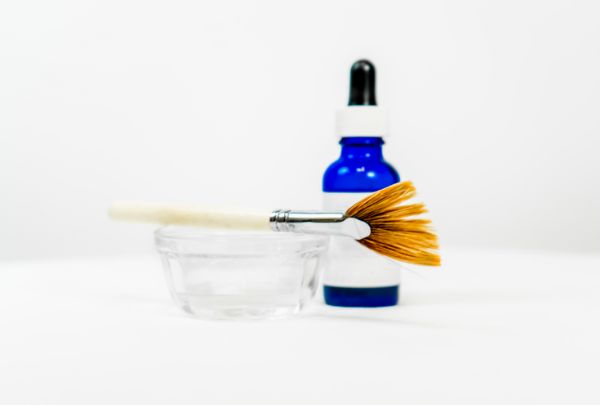Mandelic Acid Peel
Here is some of the chemistry for those interested!
Mandelic acid is an alpha hydroxy acid that’s made from bitter almonds. Because of its anti-bacterial properties, this naturally-derived acid has a variety of medical and pharmacological uses.

What does Mandelic Acid do?
Like other alpha hydroxy acids, mandelic acid has visible skin benefits. It increases skin cells turnover by dissolving the tiny bonds that hold skin cells together, allowing dead skin cells on the surface of the skin to be sloughed off faster to reveal healthier cells underneath. This increased rate of sloughing or exfoliating the outermost layer of the skin called the stratum corneum. A thinner stratum corneum reflects light better and makes skin look smoother and more youthful. Often used when the skin looks dull and greyish.
Mandelic acid and other alpha hydroxy acids also soften the appearance of fine lines and wrinkles and improve skin texture. At the same time, they lighten areas that have darkened in response to skin damage and sun exposure, it is very important to understand this statement. It will brighten sun-damaged skin and not lighten or lift hormonal pigmentation.
Some alpha hydroxy acids also boost collagen production in the dermis of the skin. Collagen is a protein that gives skin its support and youthful firmness.
How does mandelic acid compare to other alpha hydroxy acids in terms of its skin anti-aging benefits?
One of the most commonly used alpha hydroxy acids in skin products for mature skin is glycolic acid. According to a study published in the journal Cosmetic Dermatology, mandelic acid was as effective as glycolic acid for treating fine lines and wrinkles and other signs of sun damage. In fact, mandelic acid had some advantages over glycolic acid. It causes significantly less redness, flaking and skin irritation, which is a common problem with other alpha hydroxy acids.
People with deeply pigmented skin often have problems using alpha hydroxy acids because of the irritation they cause. This irritation can stimulate pigment-producing cells to produce more melanin, especially in people with a naturally dark complexion. This seems to be less of a problem with mandelic acid than with other alpha hydroxy acids.
So, mandelic acid is a better choice for people with lots of pigment in their skin as well as those with sensitive skin who may experience excessive irritation with other alpha hydroxy acids.


Due to its anti-inflammatory properties, mandelic acid may also be beneficial for treating rosacea and acne.
Due to its anti-inflammatory properties, mandelic acid may also be beneficial for treating rosacea, an inflammatory skin condition marked by facial redness and acne-like bumps. Most alpha hydroxy acids are too irritating for people with rosacea, but mandelic acid is better tolerated since it’s less irritating.
Mandelic acid has similar anti-aging benefits to other alpha hydroxy acids.
All in all, mandelic acid has similar anti-aging benefits to other alpha hydroxy acids. It lightens pigmented areas like sunspots , while reducing the appearance of fine lines and wrinkles. At the same time, it gives skin a smoother texture and more youthful appearance. Plus, it does it gently with fewer side effects than other alpha hydroxy acids. It’s an excellent choice for people who have experienced irritation with other alpha hydroxy acids.
Okay, so who does a Mandelic Acid Peel & why?
Darker skin is more pigmentation prone but those who want to rejuvenate their skin, stimulate collagen production, and need radiant skin. Mandelic acid peels are also less irritating to skin.
Rosacea sufferers would also like to follow an anti-aging regime with glowing skin but who don’t want to cause excessive inflammation which would irritate their condition.

Other Chemical Peels We Offer
Lactic acid peels are alpha hydroxy acids (AHA). Derived from milk, they offer hydration.
For easy, effective and quick control of acne-prone and moderate seborrheic skin, mesoestetic presents acnelan®




